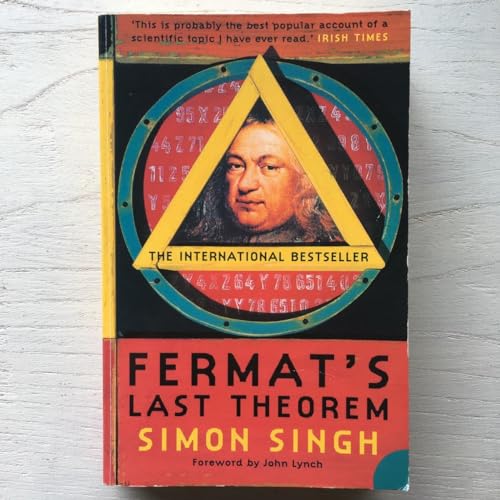
Fermat’s last theorem/Simon Singh
What is “Fermat’s Last Theorem” ?
“Fermat’s Last Theorem” is one of the most famous problems in the history of mathematics.
In the 17th century, Pierre de Fermat, a French lawyer, left behind the theorem for future generations.
“In the equation xn + yn = zn, if n is greater than 2, there are no solutions that satisfy this equation.”
This theorem belongs to the field of number theory, and many mathematicians have attempted and failed to prove it.
The time it took to prove the theorem was over 350 years.
In 1995, Andrew Wiles finally provided a complete proof.
The book “Fermat’s Last Theorem” details the journey to solving this problem.
The author, Simon Singh, is a Ph.D. in physics, a journalist, and a writer.
Despite not being particularly skilled in mathematics, I, the reader, found this non-fiction book to be a bestseller worldwide.
In an era where persistent and dedicated efforts are often overlooked, the book reminded me of the importance of such qualities.
To share this book with as many people as possible, I have written an introduction article below.
How was Fermat’s Last Theorem proven?
In the equation xn + yn = zn, when n is greater than 2, there are no solutions that satisfy this equation.
For example, for n = 3, an example like “63 + 83 = 93 – 1″ exists, but it falls short by just 1.
So, it might seem like there could be solutions for larger n, but there are none.
How was this seemingly simple statement proven?
The proof involved not only the field of number theory but also the latest knowledge from various branches of mathematics.
I took a look at Andrew Wiles’ proof paper from 1995, but it was utterly incomprehensible to me.
In fact, even specialists in mathematics find it challenging to fully understand, with only about 10% capable of doing so.
The construction of this complex theory is not solely attributed to the efforts of Andrew Wiles.
It draws upon countless insights from over 2000 years of mathematical history, the study of numerous cases where proofs failed, and the guidance provided by many papers that offered clues to the proof.
The realization of this achievement was possible due to an invisible collaboration that transcended the boundaries of time, race, nationality, and gender.
While Andrew Wiles worked in seclusion in an attic for many years, he eventually achieved his goal with the collaboration of a few close friends.
The process of many mathematicians struggling and approaching a solution, along with the numerous mathematical concepts and methods needed to solve the problem, is thoroughly explored.
The narrative delves into what is required to generate new knowledge and problem-solving approaches.
It provides a glimpse into the drama not commonly experienced in everyday life.
Geniuses Involved in the Proof of Fermat’s Last Theorem:
“Fermat’s Last Theorem” can be considered a type of human drama.
The ultimate prover, Andrew Wiles, encountered Fermat’s Last Theorem at the age of 10 in a library.
He felt an excitement for the puzzle left by Pierre de Fermat, a French lawyer, in the 17th century.
For about 30 years thereafter, Andrew Wiles delved into this somewhat unpopular topic purely because he found it enjoyable.
In 1993, Wiles presented an outline of his proof at a conference, causing a stir in the global media.
After a review by six experts, flaws were found in Wiles’ theory, leading to a period of anguish.
Unable to formally present his paper, Wiles found himself bombarded with questions from the curious public who were unaware of the circumstances.
He endured a challenging period from the discovery of theoretical flaws to their rectification.
Surprisingly, the contribution of a Japanese mathematician named Iwsawa and his work played a crucial role in repairing the defects.
Finally, Wiles’ unwavering spirit and passion bore fruit, leading to the formal announcement of his proof in 1995.
Now, it is essential to touch upon Fermat, who posed the challenging Fermat’s Last Theorem.
Surprisingly, Fermat’s primary profession was that of a judge.
Due to the instructions of the time discouraging socializing, Fermat’s hobby was to immerse himself in mathematics at home.
Despite being a hobby, Fermat seemed to possess skills that surpassed those of professional mathematicians in his field.
On a different note, in a field unrelated to number theory, two Japanese individuals, Taniyama and Goro Shimura, announced the “Taniyama–Shimura conjecture.”
Interestingly, the ultimate prover, Andrew Wiles, actually proved the “Taniyama–Shimura conjecture.”
Proving this conjecture meant proving Fermat’s Last Theorem.
While the details are omitted, it’s fascinating to note that Japanese researchers in a field distinct from number theory (Taniyama Yutaka and Shimura Goro) paved the way for Fermat’s Last Theorem.


.jpg)